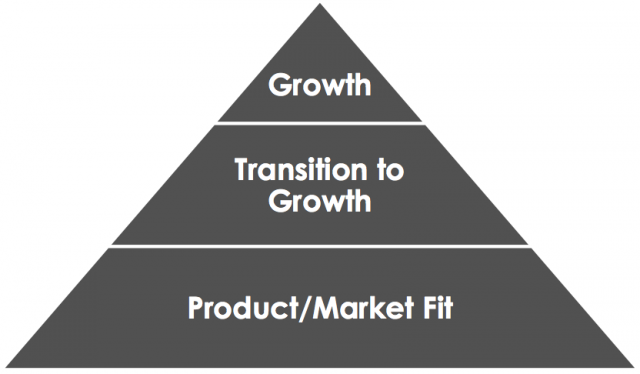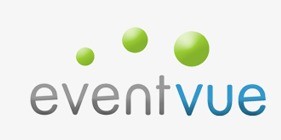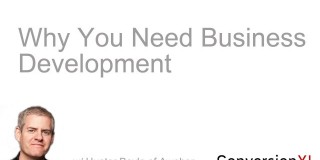I feel like “conversion rate optimization” is in 2013 what “social media marketing” was in 2009. Most startups fail. Not because they have a conversion problem but because they never really nail the product or how to market it.
The product or website (be it software, e-commerce, or a service) might be awesome, but if it puts itself in front of the wrong market, or packages itself so the right market can’t figure out why it’s awesome, the startup will fail.
The most common mistake startups make is assuming they can operate the same way big companies do, and expect success with little to no feedback from potential customers.
A corporation like Starbucks could pick locations by throwing a dart at a map and know they’ll at least break even with a new location and mediocre customer service.
But for a new coffee shop, things like customer service, atmosphere and selection, will make or break the company. If they don’t nail the experience on the first few visits, they can all but ensure their doors will closed next year. Same goes for e-commerce, SaaS or any startup really.
This is not a conversion problem. This is a customer development problem.
By the end of this article, you should have a better understanding of how to develop new products or tweak your existing offerings by working with existing or prospective customers to incorporate their feedback to create viable solutions to their problems, and clearly communicate their value.
Table of contents
So What is Customer Development?
Steve Blank, a serial entrepreneur in Silicon Valley, developed a methodology for creating businesses that runs in parallel with the traditional product development process.
The core idea behind customer development is that the assumptions you make about a target market are only guesses.
Startups rarely survive by guessing, and can only create products and business models based on facts about their target market.
Facts about your customers don’t come from your friends and families. Sorry.
You need to “get out of the building”, get in front of real customers, ask for feedback, and deeply analyze their problems. If your guesses are validated, what you’re building is might be a viable product.
More likely, your first few guesses will be invalidated however, which means it’s time to:
- Re-evaluate your core assumptions
- Change who your product is for
- Pivot the product entirely
The idea is that by repeatedly testing your hypothesis, with your customers, allowing your assumptions to be proven wrong, you can create a product & business model that customers enthusiastically get behind because it is a genuine response to their problem.
Fortunately, because most of the customer development process is about having conversations, you’ll learn more and spend a lot less to make (or reposition) your product into something people actually care about.
The Problem With Traditional Product Development
The traditional method of product development, known as the waterfall model, the design and creation of a product follows a very liner, and sequential process.
Though the waterfall model is specifically to software development, it’s core principles resonate beyond software and into startups across the board.
Using this model, entrepreneurs build products and plans based on what they think about their target market, then present the offer after the fact.
Sticking to the coffee shop metaphor from earlier the entrepreneur first assumes they need a building, coffee machines, and a variety of coffees to start their business. Similarly, an e-commerce retailer believes they need the domain name, shopping cart solution, and inventory to start their business. But is this really step one?
After the product’s developed, the startup employes marketing to get attention, Sales to close deals, and perhaps a Director of Customer Service to field customer issues.
Problem is, by the time the coffee shop opens it’s doors, or the e-tailor launches, they’ve invested a significant amount of resources, and have to figure out how to recoup their expenses, let alone profit.
Turns out, product isn’t the most critical thing for starting a business, it’s having customers to buy what you’re selling.
Eric Ries, author of “The Lean Startup” says –
“Startups exist not just to make stuff, make money, or even serve customers. They exist to learn how to build a
sustainable business.“
Customer Development is Repeatedly Testing Your Hypothesis
So if waterfall development is the huge gamble in today’s startup environment, how do we incorporate customer feedback into the product creation (or refinement) cycle?
Personally, I’ve found The Validation Board process, created by Trevor Owens and the team at The Lean Startup Machine to be the best, as it breaks down concept validation into three core phases.
Phase 1 – Exploration
In the exploration phase of the validation board method, you simply interview your customers to find the problem you think they’re having.
The idea is interviewing enough people will reveal trending problems, while confirming or invalidating your beliefs about your customers.
For startups looking to conduct these interviews pre-launch, this process could be as simple leveraging Linkedin to conduct your market research. Existing companies can segment their email database to reveal their most loyal customers.
In this case study on Moz.com by Conversion Rate Experts, the first phase of their conversion strategy was to interview paying, non-paying, and former customers about how they felt about the product. Even though Moz’s focus was conversion oriented, it’s telling that the first step is still interviewing the customer.
There are many ways you could conduct the customer interview, but here are some really great ones.
Phase 2 – The Pitch
In The Pitch phase, you essentially take what you learned about your market’s pain points from the exploration phase to create an offer in exchange for currency.
Currency can be defined as email addresses, tweets, cash or anything your customer gives up to receive a solution to their problem.
Trevor Owens shows how he uses the Exploration and Pitch method to validate a Vespa Rental business. Facinating case study, and a must watch if you want to fully understand The Validation Board Method.
Phase 3 – Concierge
The Concierge stage is about delivering the product promised in The Pitch, to a few customers with as little technology as possible.
The reason you want to start with a small customer base & minimum viable product is so you can work with those customers to create an experience they’re truly excited about.
If you want to see startups in the Concierge phase, follow what happens after a Kickstarter campaigns get successfully funded.
For a high profile example of a startup in the Concierge phase, watch what the Pebble Smartwatch does moving forward. Having presold over 68,000 units through Kickstarter – over 10,000% than they thought necessary – it turns out, that’s the smallest customer base possible, because the customer base selected themselves.
The Pebble Smartwatch itself comes stock with a fairly standard feature set – email, clock, heart rate monitor etc. But what will truly set Pebble apart from the other smart-watches on the market are the highly active forums.
Here early adopters give feedback and enterprising developers discuss app ideas. As Pebble evolves from a startup to a legitimate competitor against the likes of Apple or Sony, much of their success will hinge on how attentive the founders are to their enthusiastic early adopters. From the looks of it, they’re going to do great.
Finding Product/Market Fit
Ultimately, what all of these interviews and pivots and validation processes are for is to find what influential entrepreneur Marc Andreessen calls Product/Market Fit.
Product/Market fit is about creating the minimum viable product that satisfies a problem or need that exists within the market and is worth solving.

There are many different definitions of Product/Market fit, so many entrepreneurs struggle to know when they actually achieve it.
Steve Blank says, “Customer Validation proves that you have found a set of customers and a market who react positively to the product: By relieving those customers of some of their money.”
To make the concept a little less abstract, Sean Ellis, founder of Qualaroo, has created a metric for knowing when you’ve achieve Product/Market fit
“In my experience, achieving product/market fit requires at least 40% of users saying they would be “very disappointed” without your product. Admittedly this threshold is a bit arbitrary, but I defined it after comparing results across nearly 100 startups.”
He then recommends measuring product/market fit as early as possible, and to perfect the experience until you reach that 40% threshhold.
He warns that bringing on VP’s of Marketing and Sales before reaching P/M fit could mean your VP team might not be any better at solving the sales problem then you are and will add to your resource burn.
However, once you reach Product/Market Fit, either by tweaking your product, market, or pivoting entirely – work diligently to grow by raising capital, acquiring the best talent, and reaching more customers.
If Your Product Isn’t Experiencing Growth…
Before you consider your lack of growth a “conversion problem”, be open to the idea that your customers aren’t as enthusiastic as they could be.
This isn’t the end of the world, in fact, it’s a great time to pivot and make something people will enthusiastically want and be happy to recommend.
Services like Qualaroo or Olark can help you to start that conversation with your existing customers, and give you the valuable insight you need.
It might be the perfect time to Pivot
“When we discover that our experiments have stopped being productive, let us pivot to a new fundamental strategy that will allow us to do better experiments, that’s what a pivot is.”- Eric Ries
Famous examples of companies Pivoting usually involve the founders and early employees looking hard at what’s working, and getting rid unnecessary features.
For instance, ThePoint.com was an activist fundraising site which allowed users to contribute a sum of money towards any cause, but it was only once the funds reached a “tipping point” that the funds would be released. Problem was, the target market was wildly unfocused, so people using the site didn’t really know who it was for. There was however, one area that seemed to do well – Group buying.
“Mason and his team decided to apply this model to purchases by letting merchants advertise goods or services at a discount that would only go live if enough people signed up in advance. About a year later, Groupon was born.”
As entrepreneurs, we often bloat our offers and make them do more than is necessary. Sadly, it’s that extra stuff that fight so hard to put in that adds extra weight to a good core experience.
As you’ll see in contrasting case studies between Fab.com and Eventvue in the next section, this step of nailing the product, and having just the right amount of features is what will ultimately make or break your company.
How Fab.com Received $300,000 In Profit 30 Days After Pivoting
Sometimes, reality dictates your initial idea wasn’t what you thought it was going to be.
Founder’s Jason Goldberg and Bradford Shellhammer, learned this the hard way when their startup, Fabulis.com wasn’t the success they wanted it to be.
Fabulis.com was initially intended to to be a social network for gay men. According to this article on Inc.com, it tried to be the gay Facebook, Gay Yelp, and gay Groupon.
Problem was, Facebook, Yelp and Groupon were gay enough where a dedicated social network wasn’t entirely necessary. With the site hovering at 150,000 users for months, with no extra features prompting growth, it was time for a change.
“We couldn’t even get our friends to use it. That was the metric that really told us we needed to start over.”
After a frank conversation over wine, the two decided to pivot their site to focus on making “design at a discount” the number one priority.
They asked their existing users and friends in the interior design & tech communities, and learned that “people were ecstatic at the idea” before they even had a logo or a mockup of the site. “The premise was exciting to almost everyone we knew.”
After they committed to the pivot, they scaled from 10 employees to 3, replaced the homepage with a “coming soon” page, and quietly promoted it with Facebook ads, and a “refer a friend” feature.
Only 30 days after it’s launch on June 9th 2011, Fab had 300,000 registered members & over 10,000 members making a purchase, resulting in 1.3 million in sales and selling an average of 1,000 items per day.
The Premature Death Of Private Event Based Social Networks
On the opposite end of the spectrum, we have EventVue – a private social network for conferences and local events – as the perfect example of a company poised for greatness, that died because they stuck firmly to their assumptions without listening to their early adopters.
In their “Post Mortem” post, they list the following as the reasons for their demise. (emphasis mine)
Our Deadly Strategic Mistakes:
-tried to build a sales effort too early, with too weak of a product after initial financing
– waited too long to address the “nice to have” problem
– went after enterprise sales model with a non-recurring, small price
– didn’t make eventvue self-serve to let anyone come and get it
Our Deadly Cultural Mistakes:
– didn’t focus on learning & failing fast until it was too late
– didn’t care/focus enough about discovering how to market eventvue
– made compromises in early hiring decisions – choose expediency over talent/competency
Though there are plenty of stories of why startups failed, I picked this one specifically because it emphasizes everything else we’ve talked about in this article.
Contrasted with Fab, who focused heavily on product after pivoting, stripped out unnecessary features, and cared very much what their early users thought, it becomes very clear why companies that focus on monetizing products without customer feedback don’t thrive as well as they should.
It’s always a surprises me when people want conversion consulting, to learn they’re still in this place. Waiting to implement that “nice to have” feature, or wanting to eek out just a few more sales, then to hear they’ve not so much asked for feedback from their early or most loyal customers.
Conclusion
Before blaming lack of growth as a “conversion problem” interview your customers and deeply analyze all of your metrics to see if what you’re offering is truly something people need.
More often than not, it’s their voice that is the most necessary in the growth of your company.
When customers are invested in helping you solve their problem thoroughly, they’re invested in helping you grow.









Great post!
I think it is really hard for some companies (particularly on the B2B side where the sales cycles might be a bit more complex and take more time) to assess if they really have a product-market fit problem versus a marketing problem. In my opinion the best companies are doing customer discovery around both the product as well as the sales/marketing process – how to customers evaluate and buy, how do they measure value, what is our unique value in the minds of customers, etc.
And the real magic happens when you take all of that feedback and roll it back into the way you present the offer ;-)
Is there no obligation to the reader? Why not proof read the article prior to publishing. Because of the missing words, extra words and grammar errors, the article failed to build credibility. By the way, Pebble watch does not have a heart monitor built in.
Hey Michael,
You know, after reading through it again, you’re right. I’m sorry I didn’t catch it all. I apologize. Normally that is something I watch for like a hawk, and I probably pushed this one out before it was ready.
My wife and I had a new baby this month, and I really wanted to get this published & my editor eyes weren’t as on point as they normally are.
And you’re right about pebble too, for some reason I was looking at the running app and thinking the heart-rate monitor was built in. However, if you have a bluetooth heartrate monitor, you can use Heartbeats, and it will display on the Pebble.
http://appadvice.com/appnn/2013/08/heartbeats-introduces-your-bluetooth-heart-monitor-to-a-pebble-smart-watch
Anyways, I genuinely do appreciate you keeping me on my toes, and will make sure I’m more diligent with the next one. Thanks for taking the time to go through :-)
That was a very gracious response to a pretty harsh comment. I thought that your article had a lot of credibility and great info. I just can’t imagine closing my mind to the info in the article because of some typos – some of the most brilliant people in the world make tons spelling and grammatical mistakes, and you did not make tons. Anyhow, thanks for the great article, and congrats on the baby (just had one myself)!
HA! I just noticed that I made a grammatical error in my comment, glad to know that I can still be brilliant despite leaving out a word! ;)
Great article. I appreciate the length and detail on this topic. One thing that I think is important to keep in mind is that there are occasions when you are creating a new market. The same principles of the article apply, but it seems especially important to focus extra intently on the pain points people tell you about, but not the solutions. We are in this position at my company, creating a new market for obvious pain points but with a solution our target market didn’t know was possible. It’s harder, but definitely working. Remember the great Henry Ford quote, “If I asked people what they want, they would have said faster horses.”
Great Post Tommy, the challenge I am facing right now is how to properly craft questions prior to launch.
Hi interesting article, i specially like the conclusions part, thanks for a another great article.